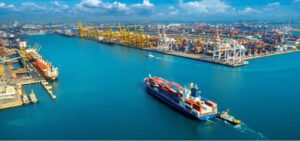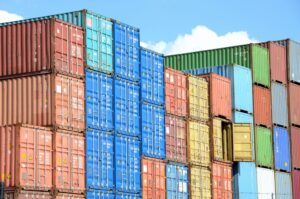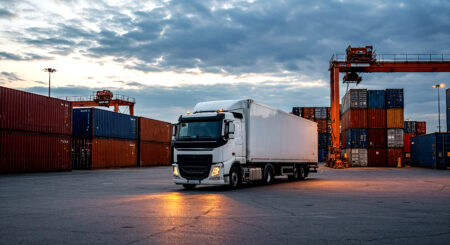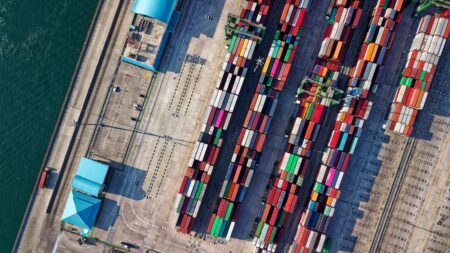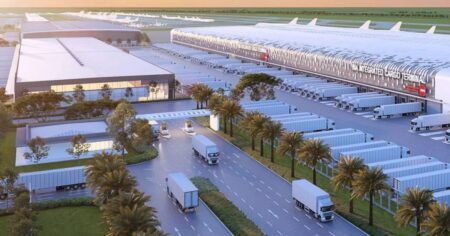The session provided insights on eco-friendly cargo movement strategies, featuring expert discussions on greener shipping and sustainable air freight, moderated by P. Balasubramanian, with industry leaders sharing innovative solutions for an environmentally responsible logistics ecosystem.
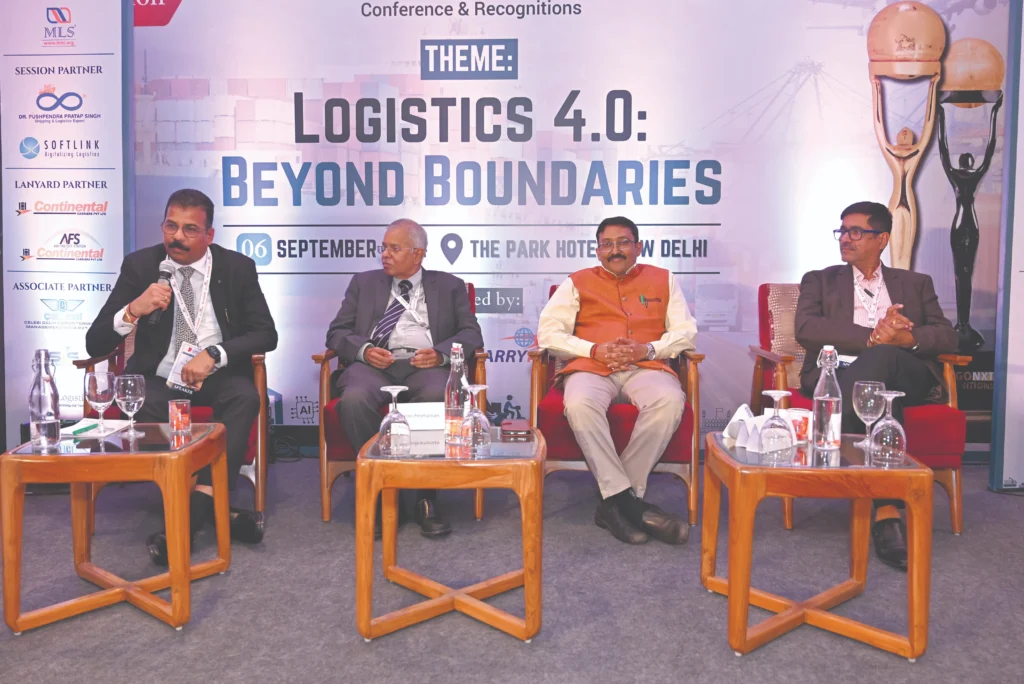
Business Session 3, titled “Driving Sustainability: Greening Strategies for Eco-Friendly Cargo Movement,” took place at the CargoNXT conference and focused on eco-friendly strategies in cargo movement, addressing topics ranging from greener shipping practices to sustainable air freight operations. Moderated by P. Balasubramanian, Founder & CEO, Air Cargo Consultancy International Services (ACCIS), the session featured insightful contributions from speakers including Vijay Wadhwani, Founder & CEO, Leveretech Supply Chain Solutions; Sasi Nair, President, Northern India Steamer Agents Association; and Rajesh Menon, Associate Director, Maritime Expert, Technical Support Unit, PM Gati Shakti, Logistics Division, DPIIT, Ministry of Commerce & Industry. The discussion aimed to build a logistics ecosystem that was not only efficient but also environmentally responsible.
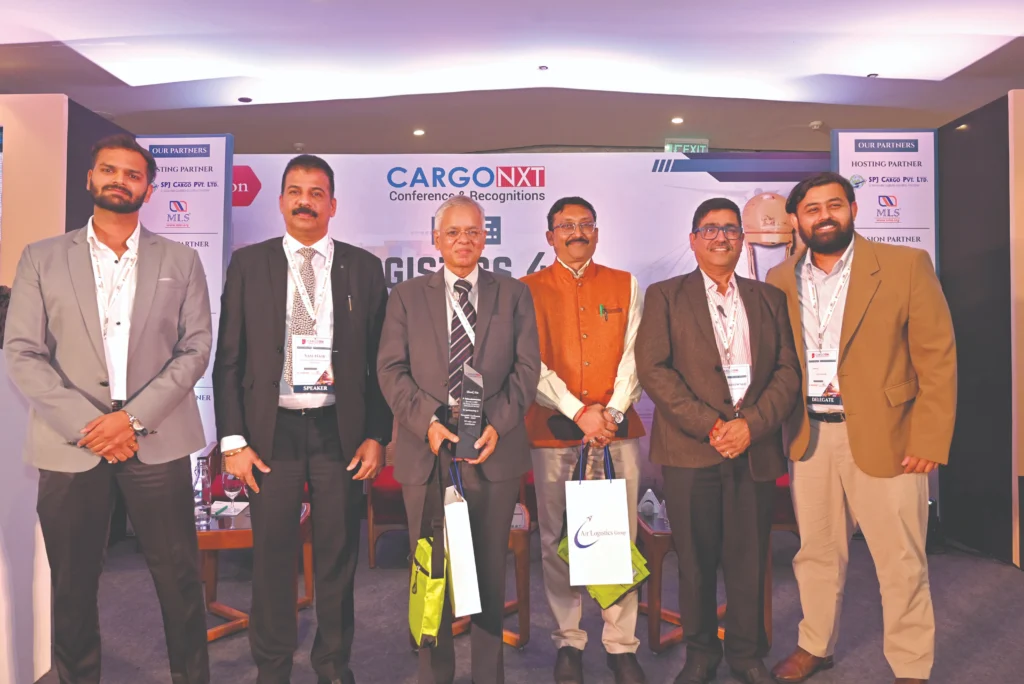
Creating a sustainable future
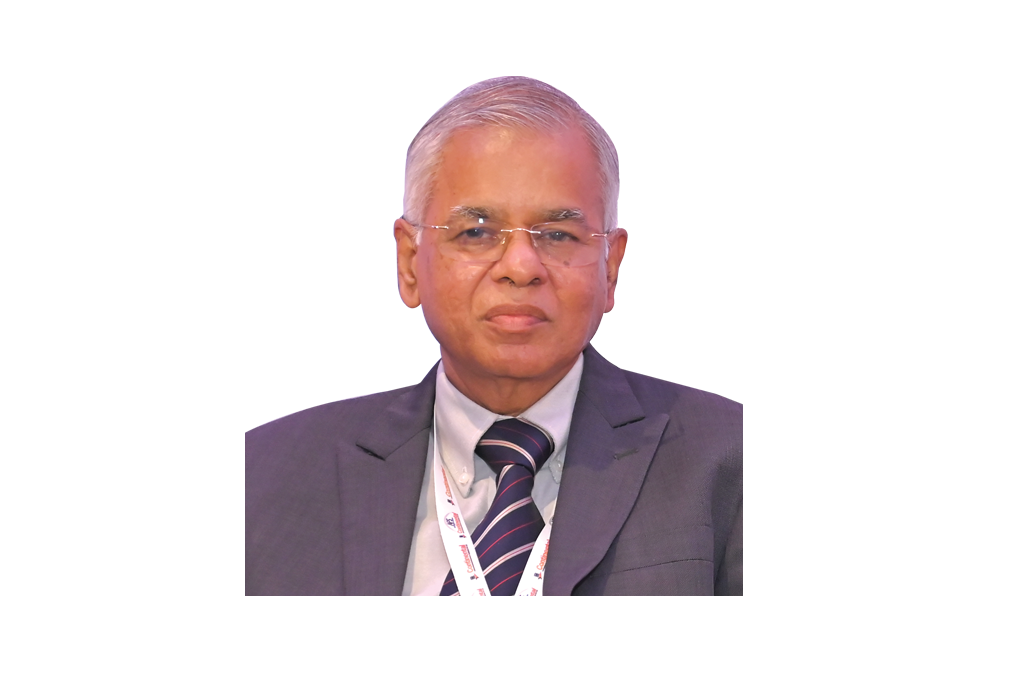
“This session isn’t about profit but about creating a better world for future generations. We’ll discuss sustainability in logistics, with Rajesh covering the maritime sector from government and industry perspectives and Sasi sharing practical insights and challenges, including frustrations with government inaction. When disruptions like COVID occur, sustainability efforts often suffer, and areas like training and research are neglected. Yet resilience and long-term focus are crucial.”
Key strategies for green logistics

As online business grows, reverse logistics is emerging as a key focus, emphasizing recycling, repacking, or liquidating goods rather than simply returning them to the warehouse
“When discussing green logistics, key areas to focus on are warehousing and transportation. Automation, including robotic warehousing, should be tailored to each organisation’s needs. In terms of transportation, India relies heavily on road transport, which needs improvement. At Relaxo, we shifted towards rail transport for moving goods from our plants and used electric vehicles for local transportation to reduce pollution. With the rise of online business, reverse logistics is another area to explore, focussing on recycling, repacking, or liquidating goods instead of sending them back to the warehouse. Simple actions like these reduce costs and enhance sustainability. Warehousing improvements, like landscaping, also contribute to pollution reduction.”
Sustainable shipping: Reducing maritime emissions
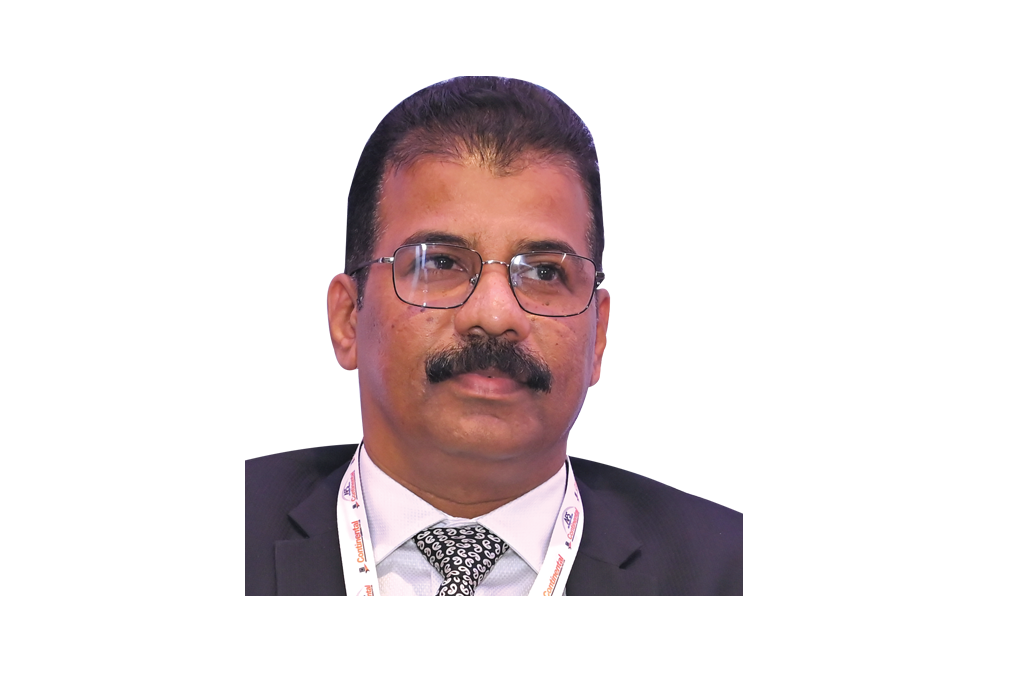
Shipping lines are enhancing engine efficiency, optimizing operations, and exploring alternative fuels to lower their carbon footprint
“Globally, 45% of greenhouse gas emissions come from three countries: China (26%), the U.S. (12%), and India (7%). Of the total emissions, 16% is from the transportation industry, with the maritime sector contributing just 3%. While this percentage seems small, the volume of CO2 emissions from maritime is substantial. The shipping industry, led by the International Maritime Organisation (IMO), is taking significant steps toward sustainability. Initiatives like the IMO 2020 regulation, which limits emissions by changing fuel types and encouraging slower steaming, have been widely adopted. Shipping lines are upgrading engines, optimising operations, and exploring alternative fuels like LNG, methanol, biofuel, and ammonia to reduce their carbon footprint. These efforts, combined with collaborations across the industry, show a strong commitment to protecting the environment for future generations.”
India’s path to green maritime practices

“Building on Sasi’s point about the maritime sector’s 3% contribution to emissions, I want to address the challenges India faces in transitioning to green practices. While alternative fuels like low-sulphur options are emerging, the cost difference (around $20-$25 per ton) poses a major challenge for the industry. The Indian government has announced plans to develop LNG bunkering facilities at all major ports, starting with Cochin, to support this transition. However, the high cost of alternative fuels like green methanol ($800+ per ton) makes it essential for India to indigenise technology rather than relying on expensive foreign solutions. The Prime Minister has committed to increasing the share of electricity from non-renewable sources to 50% by 2030, up from the current 20%. Initiatives like the National Hydrogen Mission, with significant private sector investment, aim to develop affordable green energy solutions that suit India’s unique context. With logistics costs already high (8%–9%), India must take a balanced approach, aligning with international standards while finding cost-effective solutions. On the academic side, the government has launched the Gati Shakti initiative, identifying 100 institutes, including IIM Mumbai and NIT Calicut, to focus on research in renewable energy and alternative fuels, especially for electric vehicles. This is just the start of our journey toward sustainability.”
~ Rajesh Menon, Associate Director, Maritime Expert, DPIIT, MoCI
Advancing sustainable aviation: Challenges and collaborative initiatives
P. Balasubramanian:
“Atmanirbhar Bharat is indeed in action in the areas you discussed. Now, let’s discuss Sustainable Aviation Fuel (SAF). Ethanol, hydrogen, and waste materials—like cooking oils from restaurants—can be converted into SAF. The good news is that SAF is compatible with current aviation turbine fuel, which is kerosene, and can be used in existing aircraft engines without significant modifications. However, the cost difference is substantial, and the availability of SAF is also a significant challenge. At a larger scale, SAF production presents numerous challenges, including the logistics of producing SAF at multiple sites and ensuring it is stored and transported appropriately to airports. One positive initiative related to this is the comprehensive mapping project associated with the PM Gati Shakti program, along with the National Logistics Policy, which aims to map every inch of India, identifying forests, cities, roads, ports, and animal movements. This initiative is one of the largest projects undertaken by the Government of India, and it’s truly mind-boggling.”
Rajesh Menon:
“What you mentioned is the PM Gati Shakti National Master Plan. However, this resource is currently not publicly available; it’s still in its early stages. The capability is currently limited due to the existence of a cloud storage system exclusive to the government, known as Megaraj. This data is sourced from ISRO satellites, providing comprehensive mapping across India. All infrastructure assets, including districts, pipelines, telecom lines, roads, and railways, have been mapped. The PM Gati Shakti network is managed at the highest level by the Cabinet Secretariat, which oversees a group of secretaries from various ministries. This collaborative effort has yielded various initiatives, particularly in aviation. It’s an impressive feat, as no other country has such a comprehensive system for capturing infrastructure. The previous approach was somewhat fragmented; each ministry worked in isolation. With a shared vision and collaborative planning, efforts are being coordinated to streamline operations. As logistics professionals, we can expect many initiatives to support our endeavours in the near future.”P. Balasubramanian:
“In the transportation sector, these developments promise improvements. The keywords here are time, cost, and capability. While all sectors face significant challenges in achieving sustainability goals, collaboration between organisations is vital. The CORSIA initiative aims to increase the use of sustainable aviation fuel across flights, with ambitious goals for net zero emissions by 2050. While absolute zero may be unrealistic, significant advancements can be made by 2030, aiming for a 20% reduction from the 2020 baseline year. Initiatives from IATA and ICAO must be coordinated. We need to consider how to prioritise environmental sustainability without compromising financial viability. Sustainable practices require extensive effort, and we need a strong commitment from leaders.”
Biodiesel and sustainability: Balancing costs and innovation in FMCG
Vijay Wadhwani:
“I would like to touch upon biodiesel. In the FMCG sector, transportation costs can be high. In our organization, we manage costs effectively, exploring savings in secondary transportation and implementing electric vehicles. Packaging plays a vital role; adopting a circular supply chain approach minimizes waste. With a large volume of SKUs, enhancing production planning and forecasting is crucial. However, waste management is critical; once products are manufactured, we must decide how to deal with surplus goods and the challenges of recycling.”
P. Balasubramanian:
“Technology will be pivotal in our efforts. Utilising AI, predictive analytics, and big data will enhance inventory management. While sustainability objectives are paramount, we can leverage technology. The air cargo sector advocates for increased freighter traffic, but companies considering outdated, fuel-inefficient options jeopardise profitability and contribute to carbon footprints. Technology can aid decision-making to optimise cargo loads. The importance of enhancing freight transportation and logistics operations is also noteworthy.”
Vijay Wadhwani:
“Other considerations include optimising milk runs and implementing cross-docking practices to minimise costs. Initiatives aimed at increasing profitability while maintaining sustainability can be fruitful. Balancing costs and sustainability has been a challenge, as traditional management resisted compromise, fearing the impact on profits. However, presenting actionable points can highlight the potential for improved profitability through enhanced practices. For instance, if we discuss adopting alternative fuels, the key question is whether the return on investment is sufficiently high to justify the cost.”
Transforming resistance into action: The business case for sustainability
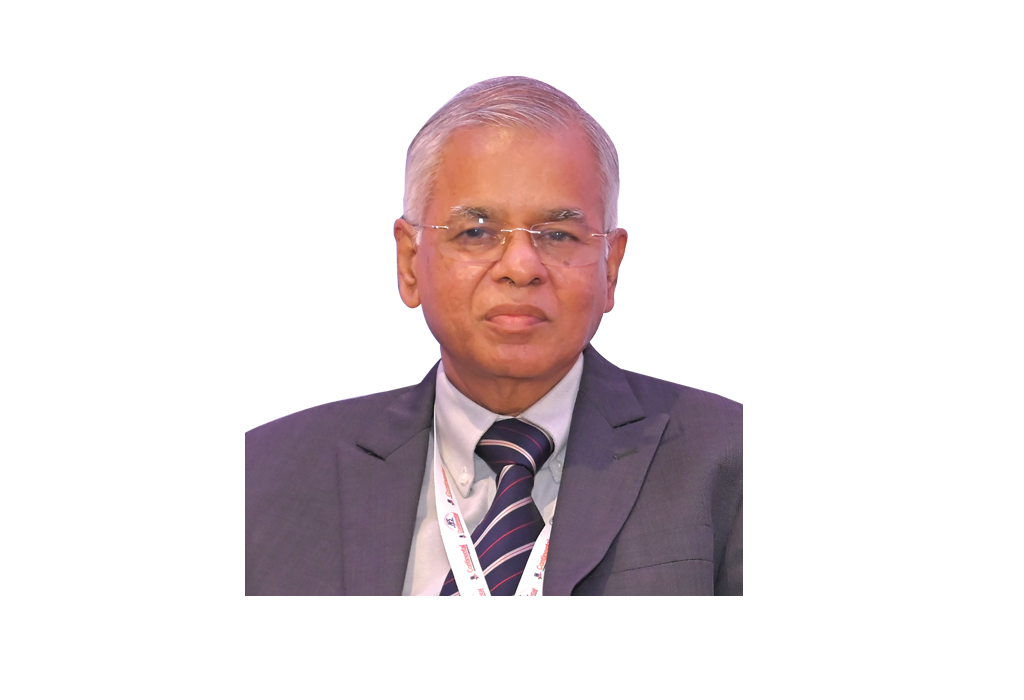
While companies may hesitate to adopt sustainability measures due to costs, gradual changes can boost both productivity and profitability.
“By focussing on environmental sustainability, we enhance our bottom line. From my experiences, I see several companies embarking on sustainability efforts. Initial management resistance has gradually shifted toward acceptance, as discussing best practices has sparked interest in conscious sustainability measures. While companies may initially hesitate to embrace sustainability measures due to perceived costs, they can implement gradual changes to enhance productivity and profitability.
Whether it’s about maintaining quality or ensuring consumer satisfaction, we have established that improvements are possible without compromising our values. Conferences like this play a vital role in disseminating knowledge and fostering change. Thank you to the CargoNXT organisers.”
~ P. Balasubramanian, Founder & CEO, ACCIS

